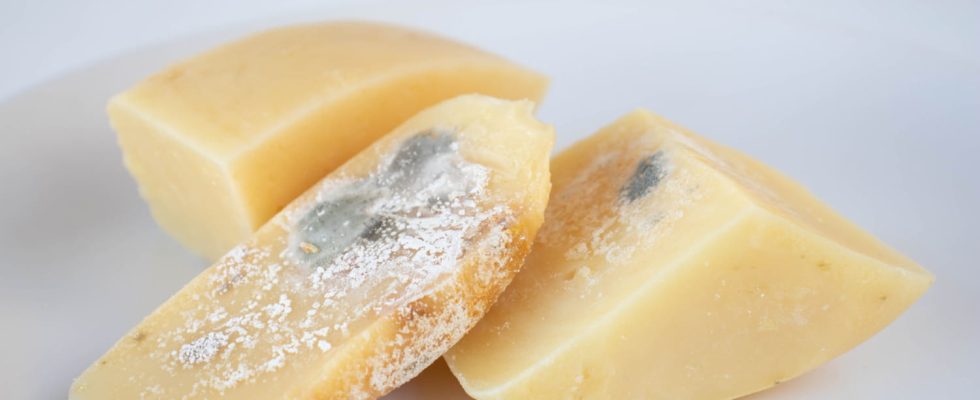It’s always when we have a craving for cheese that we notice that a mold has taken up residence on our favorite cheese. Can we still eat it? It depends…
It’s a familiar scenario for many cheese lovers: you open the refrigerator, mouth watering at the thought of enjoying a piece of cheese, only to discover to your dismay that a stain of mold has taken up residence on your milky delight. The question then arises: can we simply remove the moldy part and enjoy the rest without risk?
The foremost authority in the world on these matters is the United States Food and Drug Administration. And it gives a more nuanced answer than a simple yes or no. It indicates that, for certain cheeses, cutting off the moldy part – making sure to remove about 2.5 centimeters around and below the mold – would allow the rest of the cheese to be consumed without fear.
However, it is crucial to understand that this tolerance only applies to hard cheeses, such as Comté, Emmental, Beaufort, Cantal or Ossau-Iraty. These denser cheeses help limit the penetration of mold beyond the visible surface. Their compact structure acts as a barrier, preventing the proliferation of mold spores deep down.
On the other hand, when we venture into the area of soft cheeses, such as Brie or Camembert, the rule changes radically. The creamy texture and porosity of these cheeses promote rapid diffusion of mold spores, which can infiltrate well beyond the apparent area. So even if the mold is removed, it is quite possible that the network of rot has already traveled through the cheese, contaminating it beyond what our eyes can perceive. In this case, caution requires throwing away the whole cheese to avoid any health risks.
It should also be noted that appearance is not the only quality indicator to take into account. Smell and taste are critical senses in determining whether a cheese is still safe to eat. If the cheese gives off an abnormal smell or taste, even after removing the moldy part, it is wise to refrain from eating it. After all, mold can produce substances that alter the taste of cheese in undesirable ways, and in some cases these substances can be toxic.
Ultimately, the approach to take with moldy cheese is based on a blend of science, common sense and an understanding of the nature of each type of cheese. It is essential to treat each case of mold individually and use good judgment. When in doubt, it is better to choose safety and say goodbye to that piece of cheese, because health is priceless.
